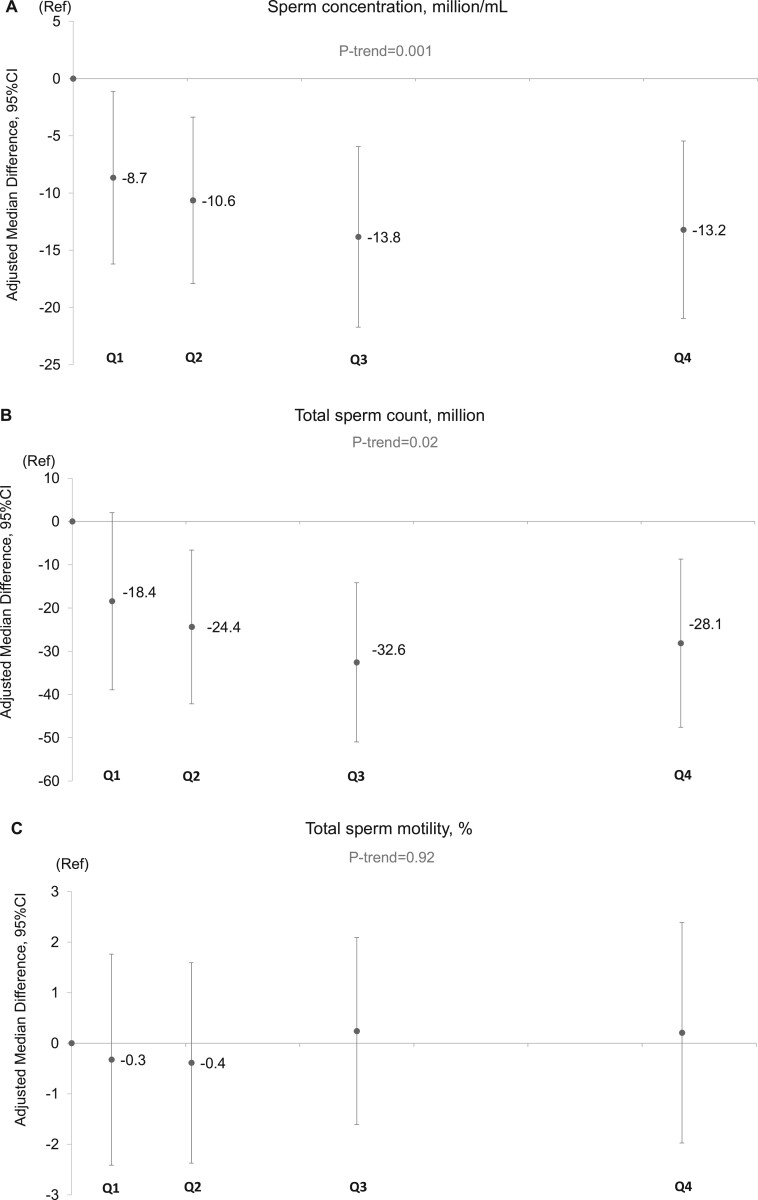Figure 1.
Adjusted median differences in reproductive parameters in young men according to intake categories of sugar-sweetened beverages (SSBs). Data are presented for (A) sperm concentration, (B) total sperm count, (C) total sperm motility, (D) progressive sperm motility, (E) normal sperm morphology, and (F) inhibin B/FSH ratio. The X-axis represents the categories spaced according to the median intake of each category of the SSB intake. The median and range of intakes (serving/day) of the categories of SSB were in ascending manner: non-consumers: 0 (0, 0), Q1: 0.07 (0.01, 0.14), Q2: 0.21 (0.14, 0.32), Q3: 0.50 (0.32, 0.65), and Q4: 1.07 (0.67, 8.64). Intakes were scaled to represent total servings per day (1 serving being equivalent to ∼200 ml). The number of men (%) in the categories are: non-consumers: 346 (12%), Q1: 558 (19%), Q2: 740 (25%), Q3: 650 (22%), and Q4: 641 (22%). The final models adjusted for age, BMI, height, smoking, use of marijuana and other recreational drug, moderate-to-vigorous physical activities (hours/week), history of reproductive diseases, reproductive surgeries, and sexually transmitted diseases (STDs), season and calendar year of the sample, mother’s education level, data-driven dietary patterns, total energy consumption, and abstinence time. In addition, for sperm motility models, we further adjusted for time elapsed between specimen collection and analysis. For the serum reproductive hormone models (here inhibin-B/FSH), we further adjusted for time of the day of the sample collection. The estimates shown are adjusted estimates of the absolute difference in the medians of each category compared to the reference category (non-consumers). Tests for trend were conducted across categories using the median value in each category of the beverage consumptions as a continuous variable in the regression models and P value was based on Wald test. N, number of men; Ref, reference category (non-consumers); Q, quartile.

